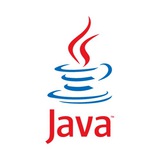Understanding the Java I/O System
In my journey with Java, I found the I/O system fascinating and essential for handling data effectively. Here’s a quick rundown:
Java I/O categories:
- Byte streams: Handle raw binary data (e.g., images, audio).
- Character streams: Deal with text data, making it human-readable.
Key Classes:
- InputStream and OutputStream for byte streams.
- Reader and Writer for character streams.
Common Operations:
1. Reading data:
FileInputStream fis = new FileInputStream("file.txt");
int data = fis.read();
2. Writing data:
FileOutputStream fos = new FileOutputStream("file.txt");
fos.write(data);
Important Tips:
- Always close streams using
try-with-resources to prevent memory leaks.- Use buffering classes (like
BufferedInputStream) for efficient data handling.Become adept at Java I/O to manipulate data seamlessly! 🚀
>>Click here to continue<<
